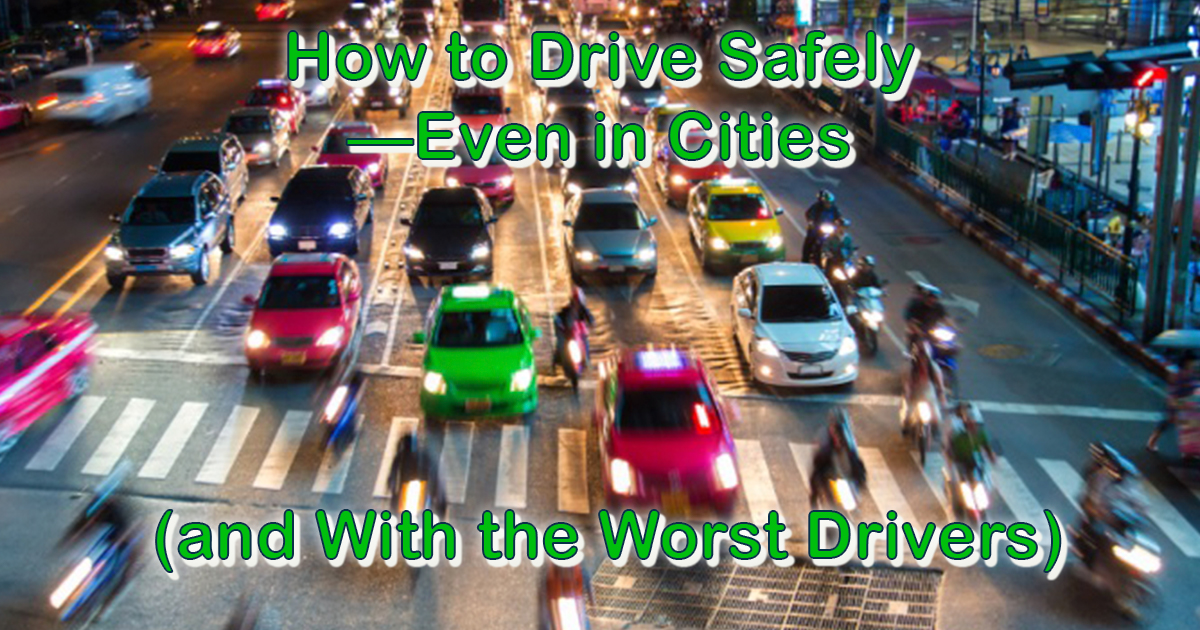How to Drive Safely—Even in Cities (and With the Worst Drivers)

How to Drive Safely—Even in Cities (and With the Worst Drivers)
Increasingly congested cities, longer commute times and shorter tempers make driving in cities a challenge. Perhaps you have felt the frustration of trying to navigate an unfamiliar downtown area in heavy traffic. Add to that damaged infrastructure, and drivers that are careless or violate traffic laws, and you have situations that try the patience of even the calmest person.
Staying safe is always a challenge when the roadways are crowded. The situation becomes even more dangerous when drivers are selfish or distracted. What’s at stake isn’t just your sense of inner calm—it’s your life. Every year, over 1.25 million people are killed in traffic crashes around the world.
Driving safely in congested urban areas means learning new skills. With those skills, you can create a safer environment—no matter what the drivers around you are doing.
7 skills that help you be a safer urban driver
Keep an eye out for the other vehicle. Don’t expect other drivers to always do what they’re supposed to do, such as stick to their lane, leave a distance between your bumper and theirs, or properly use their turn signals. Drive defensively and be on the watch for unexpected behavior.
Keep an eye out for pedestrians. In cities, more people walk or bike to their destination. Also, children on the sidewalks may step into traffic without being aware of the vehicles around them. Be aware of what’s happening on the sidewalk.
Plan ahead. Calculate reasonable traffic delays, bathroom stops and potential detours. By planning ahead, you won’t be rushing to get to your destination and can keep your calm.
Watch the weather. Prepare for wet weather, which makes it harder to see other vehicles, pedestrians, or obstacles on the road. Make sure your windshield wipers and tires are in top shape. Slow down in inclement weather.
Stay focused. Don’t use your cell phone or engage in distracting activities while behind the wheel.
Mind your speed limit. Approximately 30 percent of all deaths on the road happen simply because a driver was going too fast. Slower speeds do save lives! Stick to a reasonable speed even when that might mean going slower than the posted speed limit.
Know what it means to be a “good driver.” Good driving includes braking slowly and steadily, avoiding sharp or jarring turns and avoiding accelerating faster than necessary. Develop those habits and skills, and you’ll be ready for unexpected situations on the road.
- 2023
- 2022
- 2021
- 2020
- 2019
- 2018
- 2017

